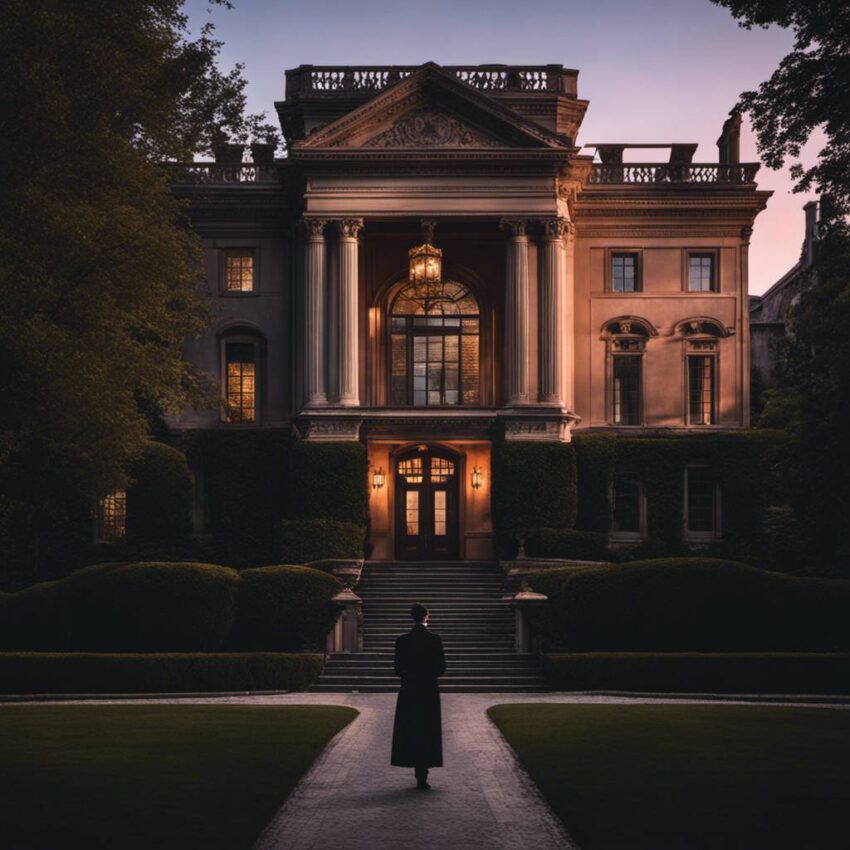For over a hundred years, murder mystery narratives have been flavored with a specific blend of elements that readers can’t seem to get enough of. A group of affluent, high-society individuals gather in a secluded mansion. The mansion is staffed with a butler, and the guests engage in conversations about haute couture or the distastefulness of Lady Beaumont’s diamond tiara. Then, invariably, a death occurs. This narrative structure is as old as the murder mystery genre itself, and we’ve seen it unfold countless times, from Sherlock Holmes’ adventures to the board game Clue. The discovery of a body in the study is a longstanding trope.
At first glance, the enduring appeal of this type of story is perplexing. Society has evolved. Readers are no longer restricted to narratives about privileged, white characters – there’s a wide array of authors from diverse backgrounds offering their unique perspectives (although we still have a long way to go). We have the option to delve into gritty, realistic crime stories, follow hardened detectives wrestling with personal demons as they unravel real-world murder cases. Why should we be interested in the untimely demise of Lady Beaumont? Yet, we are.
When I shared with my friends that I was penning a novel about a group of privileged university alumni trapped in a snowstorm with a killer, their interest was immediately piqued. Of course, there’s the undeniable cozy appeal of such narratives. The extravagant murders of nobility are much more palatable than urban gang violence. The comforting predictability of a whodunnit, where all loose ends are neatly tied up at the end, offers solace in these uncertain times. However, there’s more to it than just that.
During the golden era of detective fiction – the 1920s and 1930s – murder mysteries mirrored a society divided by class. The gap between the haves and the have-nots was vast. While writers were busy orchestrating the deaths of fictional nobility, the centuries-old social structures were on the brink of collapse. Aristocrats were burdened by debt, their grand estates were deteriorating, and domestic help was becoming scarce as people sought employment in the booming industries of nearby cities. Europe was in turmoil, with monarchs being overthrown and socialism gaining ground. The Wall Street Crash shattered the remnants of the Gilded Age in the US and beyond. The illusion of infallibility that surrounded the upper class was beginning to crumble.
However, while these societal changes provided the backdrop for these murder mysteries, they were never the central theme. The upper-class characters were not typically brought down by disgruntled servants brandishing Marxist literature. It would be a breach of whodunnit decorum. In 1928, author SS Van Dyne listed rules for detective fiction, one of which stated that the perpetrator should never be a servant. “It is a too easy solution.” he wrote. “The culprit must be a decidedly worthwhile person – one that wouldn’t ordinarily come under suspicion.” In essence, with rare exceptions, the butler was never the culprit. The wealthy were always their own downfall. This is a key aspect of the allure of these upper-class mysteries – the notion that beneath the veneer of privilege often lies corruption. The reader gradually uncovers the characters’ hidden vices – the debts, the illicit affairs, the envy – masked by refined clothing and impeccable manners. It’s a delight to see the secrets of the elite laid bare.
Fast forward to the 2020s, and society has undergone dramatic changes. We have air conditioning. We have TikTok. We have a mature democracy. Yet, we still live in a class-divided society, with a gaping chasm between the rich and the poor. We’re engaged in crucial discussions about equality, privilege, and our societal identity. Amidst these conversations, the movie Knives Out was released. A contemporary take on the country house mystery, it features a cast of updated upper-class suspects: a beauty influencer, a white supremacist, trust fund kids, and nepotism beneficiaries. And then there’s Marta, the modern-day butler who, in a clever twist, genuinely believes she committed the murder. The film was an immediate global success.
So, while much has changed, much remains the same, and our murder mysteries reflect this. The characters in my book, The Twelve Days of Murder, were part of an exclusive murder mystery club in university, which disbanded when one of them vanished. Twelve years later, they reunite for one final murder mystery game. The characters include a noble politician, a quirky artist funded by a trust fund, an influencer, a banker, and the daughter of an oligarch. Each of them harbors a secret that taints them and could be their downfall. And, just like those golden age stories of yore, the appeal lies in witnessing how the mighty have fallen.


